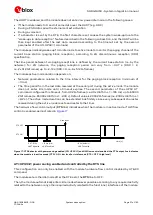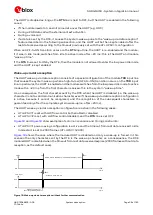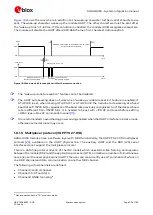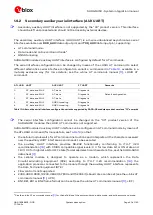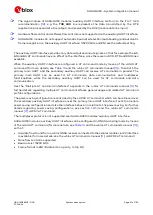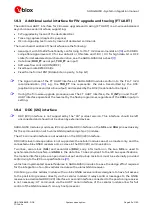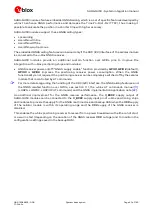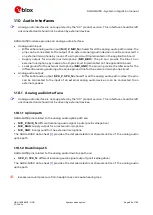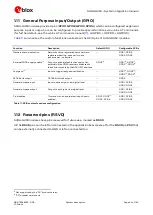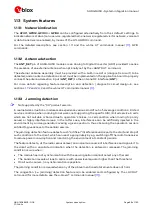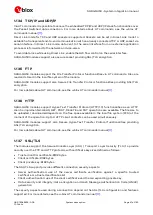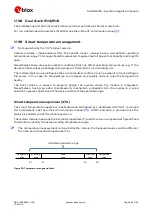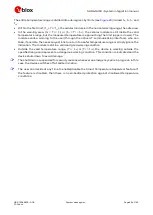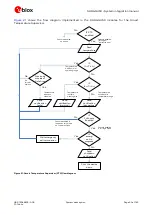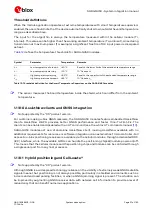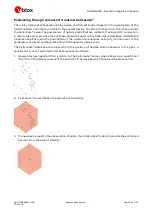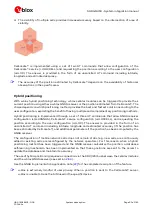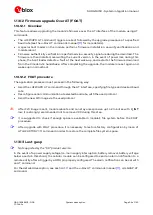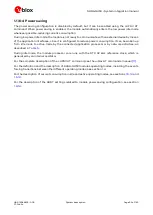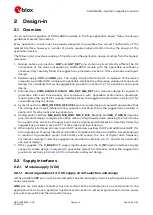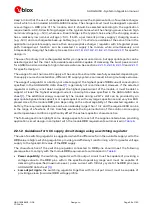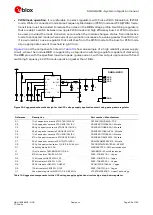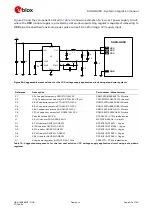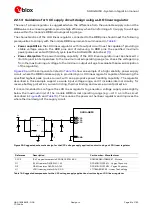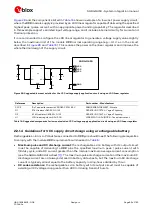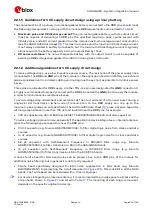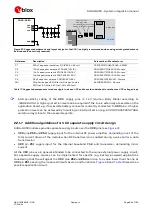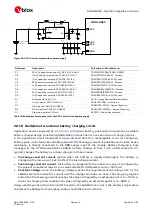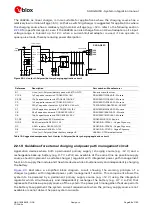
SARA-G450 - System integration manual
UBX-18046432 - R08
System description
Page 51 of 143
C1-Public
Threshold definitions
When the module application operates at extreme temperatures with smart temperature supervisor
enabled, the user should note that the device automatically shuts down outside the valid temperature
range, as described above.
The input for the algorithm is always the temperature measured within the cellular module (Ti,
internal). This value can be higher than the working ambient temperature (Ta, ambient), since during
transmission at maximum power (for example) a significant fraction of DC input power is dissipated
as heat.
defines the temperature thresholds for SARA-G450 modules.
Symbol
Parameter
Temperature Remarks
t
-2
Low temperature shutdown –40 °C
Equal to the lower limit of the extended temperature range
t
-1
Low temperature warning
–30 °C
10 °C above t
-2
t
+1
High temperature warning
+85 °C
Equal to the upper limit of the extended temperature range
t
+2
High temperature shutdown +95 °C
10 °C above t
+1
Table 12: Thresholds definition for the Smart Temperature Supervisor on the SARA-G450 modules
☞
The sensor measures the board temperature inside the shield, which can differ from the ambient
temperature.
1.13.10
AssistNow clients and GNSS integration
☞
Not supported by the “00” product version.
For customers using u-blox GNSS receivers, the SARA-G450 modules feature embedded AssistNow
clients. AssistNow A-GPS provides better GNSS performance and faster Time-To-First-Fix. The
clients can be enabled and disabled with an AT command (see the u-blox AT commands manual
SARA-G450 modules act as a stand-alone AssistNow client, making AssistNow available with no
additional requirements for resources or software integration on an external host microcontroller. Full
access to u-blox positioning receivers is available via the cellular modules, through a dedicated DDC
(I2C) interface, while the available GPIOs can handle the positioning chipset/module power-on/off.
This means that the cellular module and the positioning chips and modules can be controlled through
a single serial port from any host processor.
1.13.11
Hybrid positioning and CellLocate®
☞
Not supported by the “00” product version.
Although GNSS is a widespread technology, reliance on the visibility of extremely weak GNSS satellite
signals means that positioning is not always possible, particularly in shielded environments such as
indoors and enclosed parking facilities, or when a GNSS jamming signal is present. The situation can
be improved by augmenting GNSS receiver data with network cell information to provide a level of
redundancy that can benefit numerous applications.

